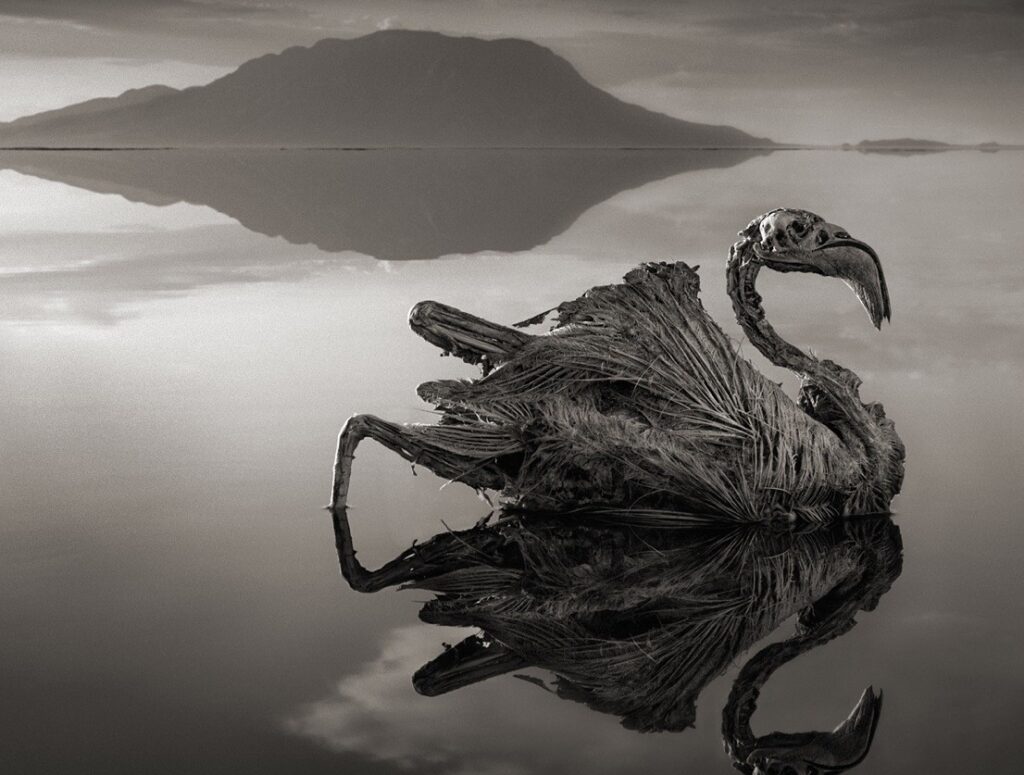AFRICA THOUGHT
– News features, commentaries, analyses, interviews & Op-ed.

By Caleb Onyeabor
Lake Natron is a salt and soda lake located in northern Tanzania. It is situated in the Great Rift Valley and is fed by mineral-rich hot springs, which results in its high alkaline levels. The lake’s pH can reach as high as 10.5, making it one of the most alkaline bodies of water in the world.
One of the most striking features of Lake Natron is its ability to turn animals that come into contact with its water into “stones”. This phenomenon is caused by the high levels of salt and minerals in the water, which cause the animals’ bodies to calcify or harden. Birds, bats, and insects are the most commonly affected animals, but even fish and reptiles are not immune to the lake’s effects.
The most famous example of this calcification is the Lesser Flamingo, which breeds on the shores of Lake Natron.
The most famous example of this calcification is the Lesser Flamingo, which breeds on the shores of Lake Natron. The high levels of salt and minerals in the lake’s water are essential for the flamingos’ breeding, as the minerals help to build the strong, sturdy nests that the birds need to raise their young. However, the same minerals that help the flamingos to breed also cause the chicks’ feathers to become coated in a hard, calcified substance, giving them a stone-like appearance.
Despite the lake’s harsh environment, it is home to a diverse array of life, including several species of fish, crustaceans, and microorganisms that have adapted to the high alkaline levels. The lake also supports a large population of the alkaline tilapia, a fish that is able to survive in the lake’s extreme conditions. Additionally, the lake is home to several species of algae that thrive in the high alkaline environment.
The surrounding area of the lake is also home to a diverse array of wildlife, including zebras, giraffes, and gazelles, as well as a variety of bird species such as pelicans, storks, and egrets. The lake is also an important stopover point for migrating birds, who use the lake’s shores as a resting place during their long journeys.
However, the lake’s harsh conditions and remote location also make it vulnerable to human impacts. The lake’s shores are often used as a grazing ground for cattle, which can damage the fragile ecosystem and disrupt the breeding patterns of the flamingos and other bird species. In addition, the lake’s hot springs are also being tapped for their mineral-rich water, which is used for a variety of industrial and agricultural purposes.
Overall, Lake Natron is a unique and fascinating ecosystem that is home to a diverse array of life. Its ability to turn animals into “stones” is a striking reminder of the harsh conditions that can be found in nature. However, it’s also important to note that the lake’s remote location and harsh environment make it particularly vulnerable to human impacts, and it’s crucial that we take steps to protect and preserve this special place for future generations.
Newsletter
Subscribe to our bi-weekly newsletter and be the first to Receive New Updates.
Your comments, ideas, and thoughts matter.
Drop us a line: